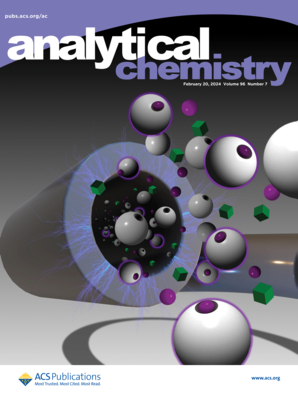Direct Detection of Natural-Abundance Low-γ Nuclei NMR Signals of Minute Quantities of Organic Solids
IF 6.7
1区 化学
Q1 CHEMISTRY, ANALYTICAL
引用次数: 0
Abstract
Low-γ nuclei signal enhancement in solid-state NMR spectroscopy is typically achieved via cross-polarization (CP) using abundant 1H polarization in organic solids. Nevertheless, direct low-γ nuclei signal detection via a single CP process is quite challenging with minute quantities of samples due to the extremely limited signal-to-noise ratio (SNR) of the acquired spectra. Herein, we demonstrated the robust performance of a multiple-contact CP experiment with multiple acquisition periods (MCP) in each transient scan, leading to several-fold SNR enhancement over a conventional single-CP experiment at fast MAS conditions with slightly increased experimental time. Spin thermodynamic analysis was further performed to achieve maximum SNR by adding the obtained Nmax CP spectra from each transient, where Nmax ∼ T1ρ/τcw. Here, T1ρ is the proton spin–lattice relaxation time in the rotating frame, and τcw is the total time of CP and a heteronuclear decoupling period. The theoretical analysis is in good agreement with experimental results, and more than 4.5-fold SNR enhancement can be achieved for the pharmaceutical danazol/vanillin cocrystals. Besides, MCP was also used for proton T1 and T1ρ measurement with high-resolution 13C detection, where both proton T1 and T1ρ can serve as the spectral-editing basis to identify different immiscible components in complex molecular systems.

求助全文
约1分钟内获得全文
求助全文
来源期刊

Analytical Chemistry
化学-分析化学
CiteScore
12.10
自引率
12.20%
发文量
1949
审稿时长
1.4 months
期刊介绍:
Analytical Chemistry, a peer-reviewed research journal, focuses on disseminating new and original knowledge across all branches of analytical chemistry. Fundamental articles may explore general principles of chemical measurement science and need not directly address existing or potential analytical methodology. They can be entirely theoretical or report experimental results. Contributions may cover various phases of analytical operations, including sampling, bioanalysis, electrochemistry, mass spectrometry, microscale and nanoscale systems, environmental analysis, separations, spectroscopy, chemical reactions and selectivity, instrumentation, imaging, surface analysis, and data processing. Papers discussing known analytical methods should present a significant, original application of the method, a notable improvement, or results on an important analyte.
 求助内容:
求助内容: 应助结果提醒方式:
应助结果提醒方式:


